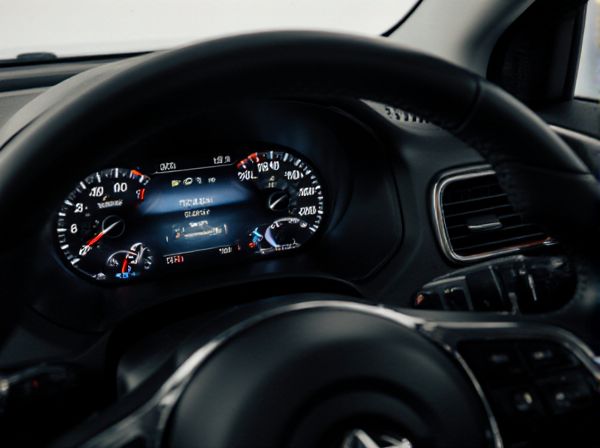
Photo illustration: Heads Up Display vs Digital Cluster
Heads Up Displays (HUDs) project essential driving information directly onto the windshield, allowing you to keep your eyes on the road while accessing speed, navigation, and safety alerts. Digital clusters replace traditional analog gauges with customizable digital screens that display vehicle data such as RPM, fuel level, and trip information in a clear, interactive format. Both systems enhance driving experience by improving information accessibility, with HUDs emphasizing real-time road visuals and digital clusters focusing on detailed vehicle metrics.
Table of Comparison
| Feature | Heads Up Display (HUD) | Digital Cluster |
|---|---|---|
| Display Location | Projected onto windshield | Instrument panel behind steering wheel |
| Primary Purpose | Displays key info without requiring driver to look away | Shows comprehensive vehicle data and controls |
| Information Displayed | Speed, navigation, warnings | Speedometer, tachometer, fuel, navigation, alerts |
| User Interaction | Minimal, mostly visual | Interactive, customizable display settings |
| Safety Impact | Reduces eyes-off-road time | Improves information clarity but may distract if overloaded |
| Technology | Projection optics, augmented reality in advanced models | LCD/OLED screens with digital interface |
| Cost | Higher due to advanced optics and integration | Generally more affordable and widely available |
Introduction to Automotive Display Technologies
Automotive display technologies have evolved to enhance driver interaction and safety through innovative interfaces like Heads Up Displays (HUD) and Digital Clusters. HUD projects critical information such as speed, navigation, and alerts directly onto the windshield, reducing the need for drivers to divert their gaze. Digital Clusters replace traditional analog gauges with customizable, high-resolution screens that integrate vehicle data, offering enhanced visibility and adaptability to diverse driving conditions.
What is a Heads Up Display (HUD)?
A Heads Up Display (HUD) projects critical driving information, such as speed, navigation, and safety alerts, directly onto the windshield within the driver's line of sight, minimizing the need to glance away from the road. Unlike a Digital Cluster that consolidates data behind the steering wheel on a digital screen, a HUD enhances situational awareness by overlaying visual data over the real-world view. This technology improves driving safety by reducing distractions and enabling quicker reaction times.
Understanding Digital Instrument Clusters
Digital instrument clusters provide a fully customizable interface that replaces traditional analog gauges with high-resolution screens, offering enhanced visibility and real-time data integration. Unlike heads-up displays (HUDs), which project essential driving information onto the windshield, digital clusters consolidate multiple vehicle metrics such as speed, fuel levels, navigation, and safety alerts within the dashboard. This centralized display system improves driver focus by presenting comprehensive information in a clear, intuitive layout tailored to individual preferences.
Key Differences Between HUD and Digital Cluster
Heads Up Display (HUD) projects essential driving information directly onto the windshield, allowing drivers to keep their eyes on the road, while Digital Clusters present data on a separate screen behind the steering wheel. HUDs enhance safety by minimizing distraction and improving reaction time, whereas Digital Clusters offer customizable layouts and detailed vehicle diagnostics. The key difference lies in HUD's focus on real-time, line-of-sight data visibility versus Digital Clusters' comprehensive control over vehicle information presentation.
Advantages of Heads Up Display
Heads Up Display (HUD) offers significant advantages over digital clusters by projecting critical driving information directly onto the windshield, allowing drivers to maintain focus on the road. This improves safety by minimizing distraction and the need to glance down at the dashboard, enhancing situational awareness in real-time. HUDs support customizable displays with navigation, speed, and alert data, providing intuitive and immediate access compared to the traditional digital instrument panels.
Benefits of Digital Clusters
Digital clusters offer enhanced customization, allowing drivers to tailor instrument layouts and information displays for improved readability and quick access to vital vehicle data. They integrate advanced features such as real-time navigation, multimedia controls, and driver assistance alerts directly into the dashboard. These clusters also improve safety by minimizing distractions through centralized, intuitive interfaces and adaptive brightness for different lighting conditions.
User Experience: HUD vs Digital Cluster
Heads Up Displays (HUDs) enhance user experience by projecting critical driving information directly onto the windshield, allowing drivers to keep their eyes on the road without shifting focus. Digital Clusters provide a customizable, high-resolution dashboard interface that centralizes vehicle data, offering detailed insights and easier interaction through touch or control interfaces. While HUDs prioritize safety and minimal distraction, Digital Clusters emphasize information richness and driver engagement, making both essential for modern automotive user experience design.
Safety and Driver Focus Considerations
Heads Up Display (HUD) projects critical driving information directly onto the windshield, allowing drivers to maintain their eyes on the road and minimizing distractions, which significantly enhances safety and driver focus. Digital Clusters centralize vehicle data within the dashboard, providing customizable and detailed information but requiring drivers to glance down, potentially diverting attention from the road. Prioritizing HUD technology supports better situational awareness and reduced cognitive load, crucial factors in preventing accidents and improving overall driving safety.
Future Trends in Automotive Displays
Heads Up Display (HUD) and Digital Cluster technologies are rapidly evolving with innovations like augmented reality integration, higher resolution, and customizable interfaces enhancing driver experience. Future trends emphasize seamless connectivity with advanced driver-assistance systems (ADAS) and real-time data visualization to improve safety and navigation efficiency. Automotive manufacturers increasingly adopt OLED and microLED displays, enabling brighter, more energy-efficient, and flexible screen designs for both HUDs and digital clusters.
Which Display is Right for Your Vehicle?
Choosing between a Heads Up Display (HUD) and a Digital Cluster depends on your driving needs and preference for information visibility. HUDs project critical data like speed and navigation directly onto the windshield, minimizing distraction and keeping your eyes on the road. Digital Clusters offer customizable, vibrant dashboard interfaces that consolidate vehicle stats and multimedia controls in one central location.
 caratoz.com
caratoz.com